
OLD MONEY STYLE
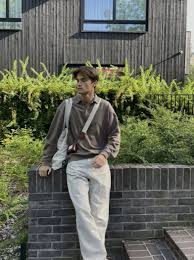
When it comes to clothing and fashion, the old money aesthetic is all about timeless elegance and understated luxury. The key is subtlety—pieces that signal wealth through craftsmanship and quality rather than flashiness. Below are the elements that define old money style in fashion:
1. Classic, Tailored Pieces
- Suits and Blazers: A well-tailored suit is a cornerstone of old money fashion. These suits are typically made from high-quality fabrics like wool, tweed, or cashmere, and they have a structured, but not stiff, fit. Think navy blazers, gray suits, or tweed sport coats with a classic, clean silhouette.
- Vests and Waistcoats: Old money style often incorporates vests and waistcoats into outfits, adding a polished touch to casual or formal looks.
- Button-Down Shirts: Crisp, well-fitted shirts in white, light blue, or pale pastels. They are often made from fine cotton or linen for breathability and comfort.
2. Quality Fabrics and Materials
- Wool: Wool is a dominant fabric in the old money wardrobe. It’s both practical and luxurious, ideal for suits, skirts, and outerwear.
- Tweed and Houndstooth: These are quintessential patterns for outerwear like jackets, blazers, and coats, giving a nod to traditional British style and equestrian wear.
- Cashmere and Merino Wool: Sweaters, cardigans, and scarves in soft, natural fibers like cashmere or merino wool add a refined touch to any outfit, with a focus on comfort and longevity.
- Silk and Linen: For more formal occasions, silk ties, scarves, and blouses are common, while linen suits or shirts may be worn in summer for a light, breathable option.
3. Color Palette
- Neutral Tones: The old money aesthetic thrives on muted, classic colors like navy, charcoal gray, beige, camel, and brown. These tones convey sophistication without drawing attention.
- Earthy and Muted Shades: You’ll also see subtle variations of olive, deep green, burgundy, and soft pastels, but they are always sophisticated and restrained, avoiding bright or neon hues.
- Monochromatic Looks: Old money fashion often incorporates a single color or a few complementary tones to create a unified, refined look.
4. Subtle Patterns and Prints
- Plaids and Checks: Gentle plaids, windowpane checks, and subtle stripes are often seen in suits or shirts. Houndstooth or gingham may also make an appearance in outerwear or accessories.
- Polka Dots and Stripes: A few well-placed, classic prints (think small polka dots or thin stripes) can add visual interest without overwhelming the outfit.
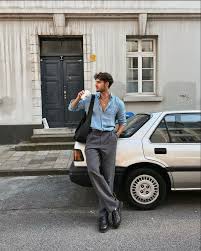
5. Tailored and Conservative Silhouettes
- Clean Lines: Old money fashion avoids overly trendy or figure-hugging clothes. Instead, it favors classic cuts—loose trousers, high-waisted skirts, and blouses with structure. A-line skirts, wide-leg trousers, and straight-leg jeans are staples.
- Preppy Style: Elements of Ivy League or preppy style are often seen in the wardrobes of those with old money. This includes khakis, cardigans, polo shirts, and cashmere sweaters draped over shoulders.
- Coats and Outerwear: A long wool coat or trench coat in classic cuts is a key piece for both men and women. Overcoats are often tailored with attention to detail, like a double-breasted design or clean lines without flashy embellishments.
6. Accessories
- Leather Goods: Accessories like high-quality leather handbags, belts, and shoes are often in neutral shades like brown, black, or tan, with discreet logos (if any). Brands like Hermès or Louis Vuitton are favored for their understated designs, particularly their classic handbags.
- Silk Scarves: For women, a silk scarf is often worn around the neck or tied to a handbag, offering a soft splash of color or pattern without overpowering the outfit.
- Ties and Pocket Squares: For men, silk ties in classic stripes or subtle patterns (like paisley or dots) complement a suit. A pocket square in a crisp white or muted color can elevate a blazer.
- Jewelry: Jewelry is kept to a minimum but is always high-quality. Think pearl earrings, simple diamond studs, and gold or silver watches (vintage or heirloom pieces). Cufflinks might be worn with formal shirts or suits, often in a classic, understated style.
7. Footwear
- Loafers and Brogues: Footwear tends to lean towards classic, well-made leather shoes, such as Oxford shoes, brogues, or loafers. The emphasis is on quality over trend.
- Penny Loafers and Boat Shoes: For a more relaxed look, especially in warm weather, penny loafers or boat shoes are common, especially in casual settings like weekends at the country club or boating trips.
- Riding Boots: A nod to the equestrian roots of old money, riding boots are often worn in fall or winter months with skirts or trousers, adding a rugged yet refined element to an outfit.
8. Hairstyle and Grooming
- Well-Groomed: The old money aesthetic values a polished, well-maintained appearance. For men, this often means short, neatly styled hair, possibly with a side part or classic cut. For women, hairstyles tend to be natural and elegant—think chignons, soft waves, or elegant updos.
- Minimal Makeup: Women who embrace the old money look typically opt for minimal makeup that enhances their natural beauty—think subtle foundation, light blush, and neutral lip colors. The focus is on natural beauty and elegance, not dramatic or heavy makeup.
9. Brands and Designers
Old money fashion often incorporates established, classic brands with a heritage of quality craftsmanship, avoiding anything too trendy or overtly modern. These include:
- Ralph Lauren: Known for its classic, Ivy League-inspired clothing and accessories.
- Burberry: Famous for its trench coats, cashmere scarves, and check patterns.
- Chanel: Though expensive, Chanel’s designs epitomize timeless style, from classic tweed jackets to pearls and handbags.
- Hermès: Known for its luxurious leather goods, scarves, and understated but high-quality fashion.
- Brooks Brothers: For tailored suits, shirts, and elegant, preppy accessories.
The Overall Vibe
Old money style in clothing is centered around restraint. The goal isn’t to stand out with flashy labels or extravagant outfits; it’s about conveying a sense of effortless refinement. This aesthetic values longevity—pieces are chosen for their timeless quality and ability to be worn for years, often passed down through generations. Ultimately, it’s the kind of fashion that whispers wealth and sophistication, rather than shouting it.





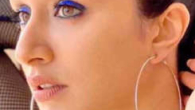
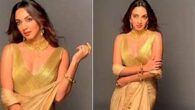
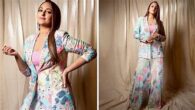
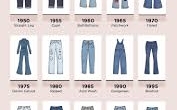

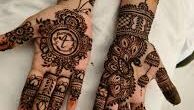
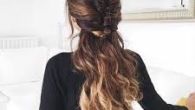
Leave a Reply